A Deployable Conical Log Spiral Antenna for Small Spacecraft: Electronic Design and Test
Abstract
:1. Introduction
2. Antenna and Feed Network Design
2.1. Conical Log Spiral Antenna Design
2.2. Impedance Network Design
2.3. Antenna Structural Design
2.4. Spacecraft Attachment and Deployment
3. Antenna Measurements
4. Conclusions
5. Patents
Author Contributions
Funding
Data Availability Statement
Acknowledgments
Conflicts of Interest
References
- Abulgasem, S.; Tubbal, F.; Raad, R.; Theoharis, P.I.; Lu, S.; Iranmanesh, S. Antenna Designs for CubeSats: A Review. IEEE Access 2021, 9, 45289–45324. [Google Scholar] [CrossRef]
- Saulius, R.; Laurynas, M.; Martynas, M.; Domantas, B. UHF/VHF monopole antenna array for cubesats. In Proceedings of the 40th ESA Antenna Workshop, Noordwijk, The Netherlands, 8–10 October 2019. [Google Scholar]
- Sureda, M.; Sobrino, M.; Millan, O.; Aguilella, A.; Solanellas, A.; Badia, M.; Munoz-Martin, J.F.; Fernandez, L.; Ruiz-De-Azua, J.A.; Camps, A. Design and Testing of a Helix Antenna Deployment System for a 1U CubeSat. IEEE Access 2021, 9, 66103–66114. [Google Scholar] [CrossRef]
- Huang, T.; Reveles, J.R.; Gurusamy, V.; Harrington, Q.; Fraux, V. An Innovative Deployable VHF/UHF Helical Antenna for Nanosatellites. In Proceedings of the 13th European Conference on Antennas and Propagation (EuCAP), Krakow, Poland, 31 March–5 April 2019; pp. 1–4. [Google Scholar]
- Dufour, L.; Andrade, D.; Maghaldadze, N.; Datashvili, L. High Performance Deployable Helical Antenna. In Proceedings of the 40th ESA Antenna Workshop, Noordwijk, The Netherlands, 8–10 October 2019. [Google Scholar]
- Bradbury, L.M.; Diaconu, D.; Molgat Laurin, S.; Beattie, A.M.; Ma, C.; Spydevold, I.S.; Haugli, H.C.; Zee, R.E.; Harr, J.; Udnæs, F. NorSat-2: Enabling advanced maritime communication with VDES. Acta Astronaut. 2019, 156, 44–50. [Google Scholar] [CrossRef]
- Costantine, J.; Tawk, Y.; Ayoub, F.; Christodoulou, C.G.; Olson, G.; Pellegrino, S. UHF deployable antenna structures for CubeSats. In Proceedings of the 2014 United States National Committee of URSI National Radio Science Meeting (USNC-URSI NRSM), Boulder, CO, USA, 8–11 January 2014; p. 1. [Google Scholar]
- Costantine, J.; Tawk, Y.; Christodoulou, C.G.; Banik, J.; Lane, S. CubeSat Deployable Antenna Using Bistable Composite Tape-Springs. IEEE Antennas Wirel. Propag. Lett. 2012, 11, 285–288. [Google Scholar] [CrossRef]
- Islam, M.R.; Carvalho, M.; Venkatakrishnan, S.B.; Volakis, J.L. Packable and Readily Deployable Tightly Coupled Dipole Array (TCDA) With Integrated Planar Balun. IEEE Open J. Antennas Propag. 2022, 3, 1206–1217. [Google Scholar] [CrossRef]
- Manohar, V.; Bhardwaj, S.; Venkatakrishnan, S.B.; Volakis, J.L. VHF/UHF Ultrawideband Tightly Coupled Dipole Array for CubeSats. IEEE Open J. Antennas Propag. 2021, 2, 702–708. [Google Scholar] [CrossRef]
- Yang, Y.H.; Guo, J.L.; Sun, B.H.; Huang, Y.H. Dual-Band Slot Helix Antenna for Global Positioning Satellite Applications. IEEE Trans. Antennas Propag. 2016, 64, 5146–5152. [Google Scholar] [CrossRef]
- Costantine, J.; Tawk, Y.; Moth, S.; Christodoulou, C.G.; Barbin, S.E. A modified helical shaped deployable antenna for cubesats. In Proceedings of the 2012 IEEE-APS Topical Conference on Antennas and Propagation in Wireless Communications (APWC), Cape Town, South Africa, 2–7 September 2012; pp. 1114–1116. [Google Scholar]
- Costantine, J.; Tran, D.; Shiva, M.; Tawk, Y.; Christodoulou, C.G.; Barbin, S.E. A deployable quadrifilar helix antenna for CubeSat. In Proceedings of the 2012 IEEE International Symposium on Antennas and Propagation, Chicago, IL, USA, 8–13 July 2012; pp. 1–2. [Google Scholar]
- Balanis, C.A. Antenna Theory Analysis and Design, 4th ed.; John Wiley & Sons: Hoboken, NJ, USA, 2016. [Google Scholar]
- Wu, P.-R. A deployable cross LPD array on a conducting cone. IEEE Trans. Antennas Propag. 1969, 17, 428–435. [Google Scholar]
- Liu, A.; Lu, J. A UHF Deployable Log Periodic Dipole Antenna: Concept, Design, and Experiment. IEEE Trans. Antennas Propag. 2021, 69, 538–543. [Google Scholar] [CrossRef]
- Olson, G.; Pellegrino, S.; Costantine, J.; Banik, J. Structural Architectures for a Deployable Wideband UHF Antenna. In Proceedings of the 53rd AIAA/ASME/ASCE/AHS/ASC Structures, Structural Dynamics and Materials Conference 2012, Honolulu, Hawaii, 23–26 April 2012. [Google Scholar]
- Costantine, J.; Tawk, Y.; Ernest, A.; Christodoulou, C.G. Deployable antennas for CubeSat and space communications. In Proceedings of the 6th European Conference on Antennas and Propagation (EUCAP), Prague, Czech Republic, 26–30 March 2012; pp. 837–840. [Google Scholar]
- Ernest, A.J.; Tawk, Y.; Costantine, J.; Christodoulou, C.G. A Bottom Fed Deployable Conical Log Spiral Antenna Design for CubeSat. IEEE Trans. Antennas Propag. 2015, 63, 41–47. [Google Scholar] [CrossRef]
- Williams, L.R.; Hoel, K.V.; Bråten, L.E.; Sagsveen, B. Design and Test of a UHF Deployable Conical Log Spiral Antenna for Small Satellites. In Proceedings of the 18th European Conference on Antennas and Propagation (EuCAP), Glasgow, UK, 17–22 March 2024; pp. 1–5. [Google Scholar]
- Costantine, J.; Tawk, Y.; Maqueda, I.; Sakovsky, M.; Olson, G.; Pellegrino, S.; Christodoulou, C.G. UHF Deployable Helical Antennas for CubeSats. IEEE Trans. Antennas Propag. 2016, 64, 3752–3759. [Google Scholar] [CrossRef]
- Costantine, J.; Tawk, Y.; Christodoulou, C.G.; Maqueda, I.; Sakovsky, M.; Pellegrino, S. A new UHF deployable antenna for cubeSats. In Proceedings of the 2015 IEEE International Symposium on Antennas and Propagation & USNC/URSI National Radio Science Meeting, Vancouver, BC, Canada, 19–24 July 2015; pp. 1426–1427. [Google Scholar]
- Sydor, J. The highly shortened conical helix. In Proceedings of the 2nd IEEE International Conference on Universal Personal Communications, Ottawa, ON, Canada, 12–15 October 1993; Volume 2, pp. 914–918. [Google Scholar]
- Dyson, J. The characteristics and design of the conical log-spiral antenna. IEEE Trans. Antennas Propag. 1965, 13, 488–499. [Google Scholar] [CrossRef]
- Dyson, J.D. The unidirectional equiangular spiral antenna. IRE Trans. Antennas Propag. 1959, 7, 329–334. [Google Scholar] [CrossRef]
- Dyson, J. A survey of the very wide band and frequency independent antennas-1945 to the present. J. Res. Natl. Bur. Stand. Sect. D Radio Propag. 1962, 66D, 1–6. [Google Scholar] [CrossRef]
- Dyson, J.; Mayes, P. New circular-polarized frequency-independent antennas with conical beam or omnidirectional patterns. IRE Trans. Antennas Propag. 1961, 9, 334–342. [Google Scholar] [CrossRef]
- Zaghloul, A.I.; Anthony, T.K.; Coburn, W.O. A study on conical spiral antennas for UHF SATCOM terminals. In Proceedings of the 2012 IEEE International Symposium on Antennas and Propagation, Chicago, IL, USA, 8–14 July 2012; pp. 1–2. [Google Scholar]
- Dyson, J. The equiangular spiral antenna. IRE Trans. Antennas Propag. 1959, 7, 181–187. [Google Scholar] [CrossRef]
- McLean, J.; Sutton, R.; Foltz, H. Quantitative assessment of the operation of the infinite balun. In Proceedings of the 16th International Symposium on Antenna Technology and Applied Electromagnetics (ANTEM), Victoria, BC, Canada, 13–16 July 2014; pp. 1–2. [Google Scholar]
- McLean, J.; Sutton, R. The off-axis, time-domain response of conical log spiral antennas. In Proceedings of the 2012 Loughborough Antennas & Propagation Conference (LAPC), Loughborough, UK, 12–13 November 2012; pp. 1–4. [Google Scholar]
- Galante, A.; Galante, O.; Campos, L. Study on application of PTFE, FEP and PFA fluoropolymers on radiation dosimetry. Nucl. Instruments Methods Phys. Res. Sect. A Accel. Spectrometers Detect. Assoc. Equip. 2010, 619, 177–180. [Google Scholar] [CrossRef]
- Madrazo, C. Carbon Fiber Coil Spring Characterization and Manufacturing. Master’s Thesis, University of Nevada, Las Vegas, NV, USA, 2022. [Google Scholar]
- ISO 17025:2017; General Requirements for the Competence of Testing and Calibration Laboratories. International Organization for Standardization: Geneva, Switzerland, 2017.
- IEEE Std 1720-2012; IEEE Recommended Practice for Near-Field Antenna Measurements. The IEEE Standards Association Standards Board: Piscataway, NJ, USA, 2012; pp. 1–102.
- Foged, L.; Castañer, M. Modern Automotive Antenna Measurements; Artech House: Norwood, MA, USA, 2022. [Google Scholar]
- Kraus, J.D. Antennas, 2nd ed.; McGraw-Hill: New York, NY, USA, 1988. [Google Scholar]
- Rumsey, V. A solution to the equiangular spiral antenna problem. IRE Trans. Antennas Propag. 1959, 7, 117. [Google Scholar] [CrossRef]
- McFadden, M. Analysis of the Equiangular Spiral Antenna. Ph.D. Thesis, Georgia Institute of Technology, Atlanta, GA, USA, 2009. [Google Scholar]
- Yeh, Y.; Mei, K. Theory of conical equiangular-spiral antennas–Part I–Numerical technique. IEEE Trans. Antennas Propag. 1967, 15, 634–639. [Google Scholar] [CrossRef]
- Mast, E. A Theoretical Study of the Equiangular Spiral Antenna; Antenna Laboratory Technical Report 035; University of Illinois at Urbana-Champaign: Urbana, IL, USA, 1958. [Google Scholar]
- Milligan, T.A. Modern Antenna Design, 2nd ed.; John Wiley & Sons, Inc.: Hoboken, NJ, USA, 2005. [Google Scholar]
- Volakis, J.L. Antenna Engineering Handbook, 5th ed.; McGraw-Hill Education: New York, NY, USA, 2019. [Google Scholar]
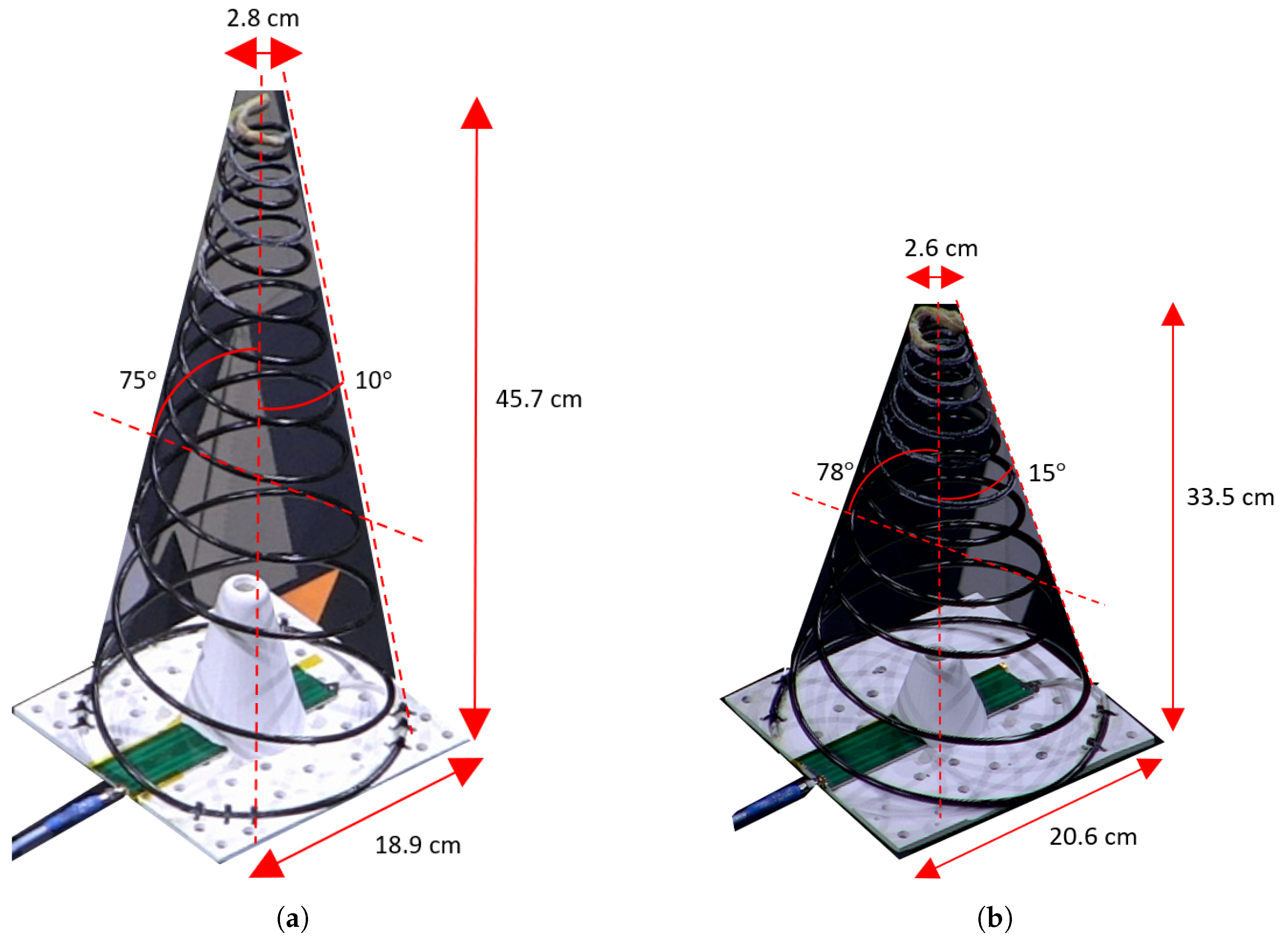
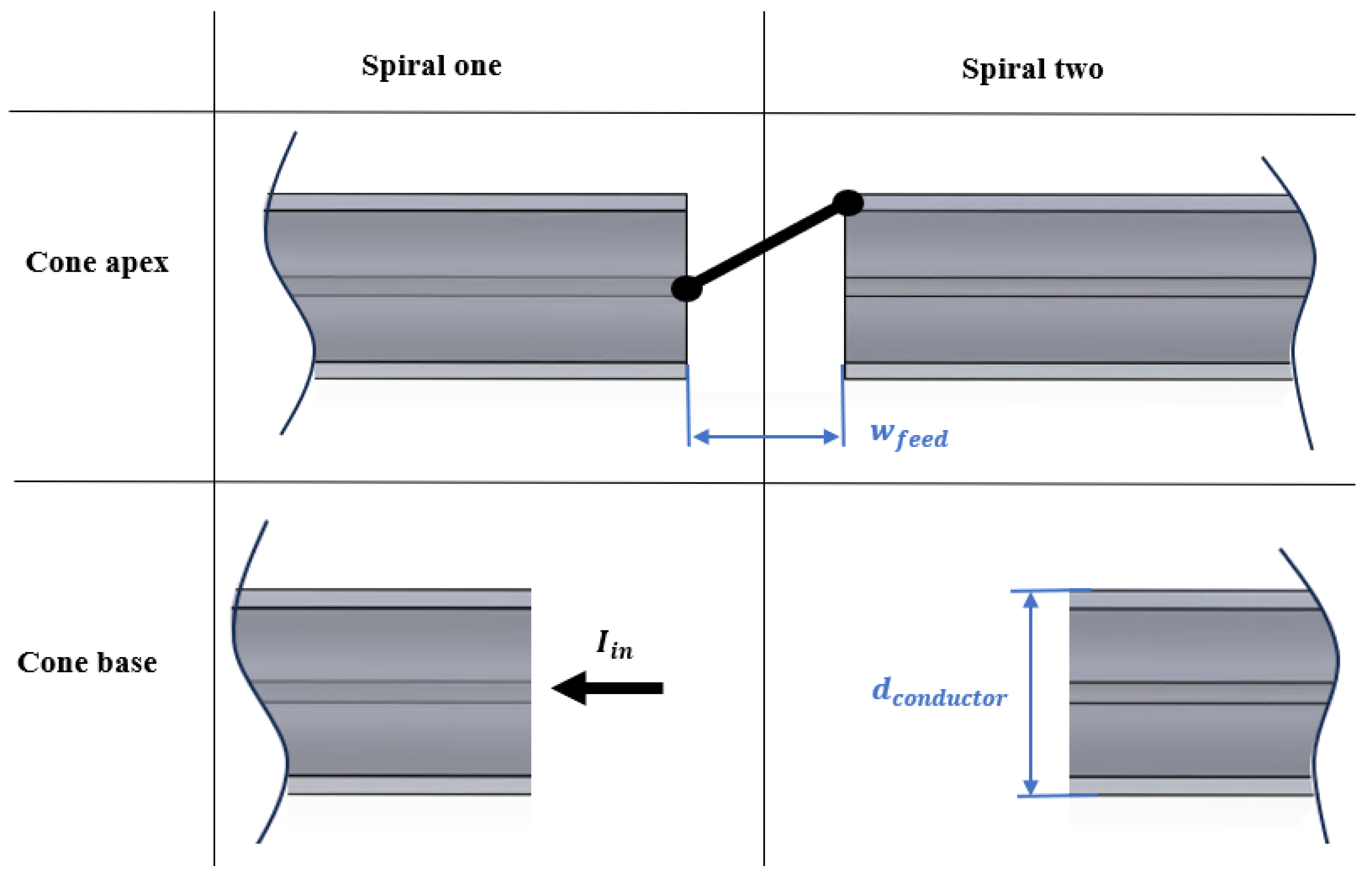

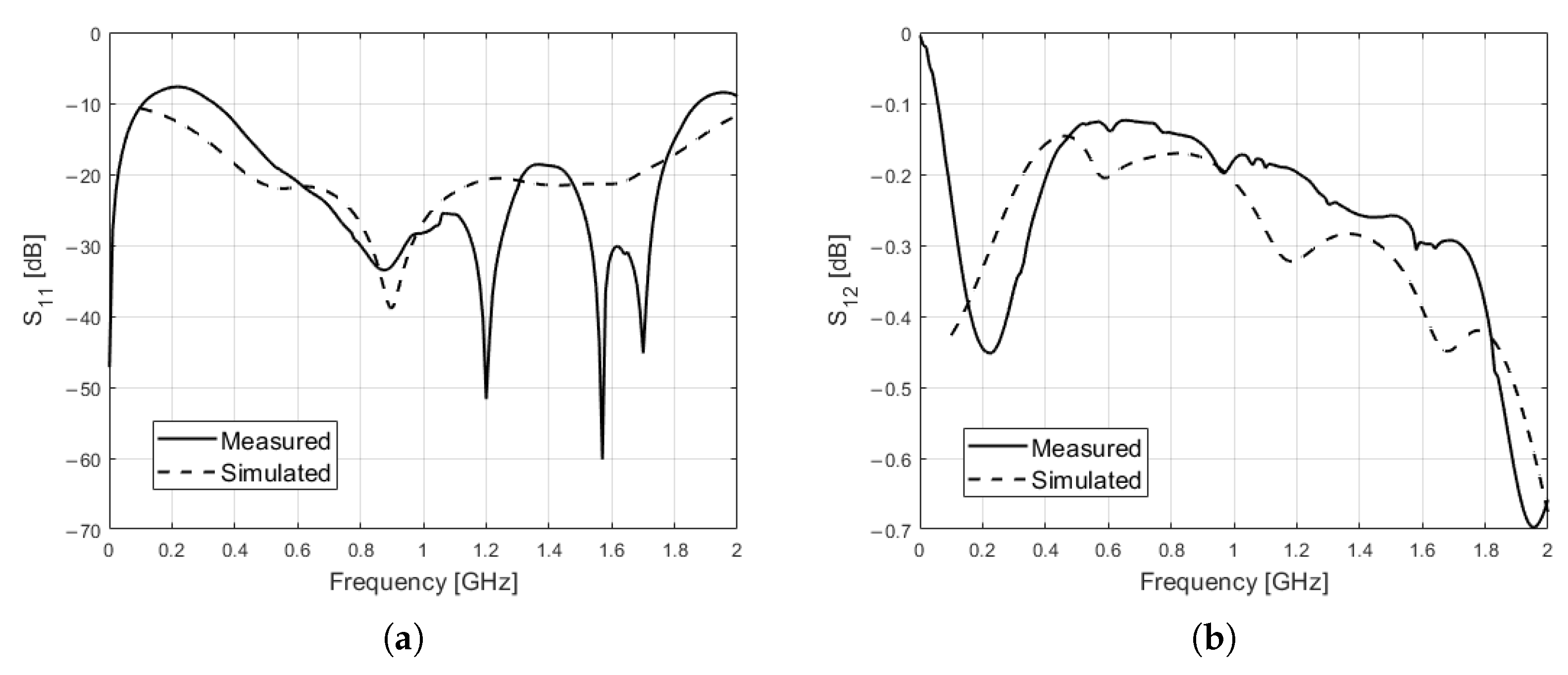



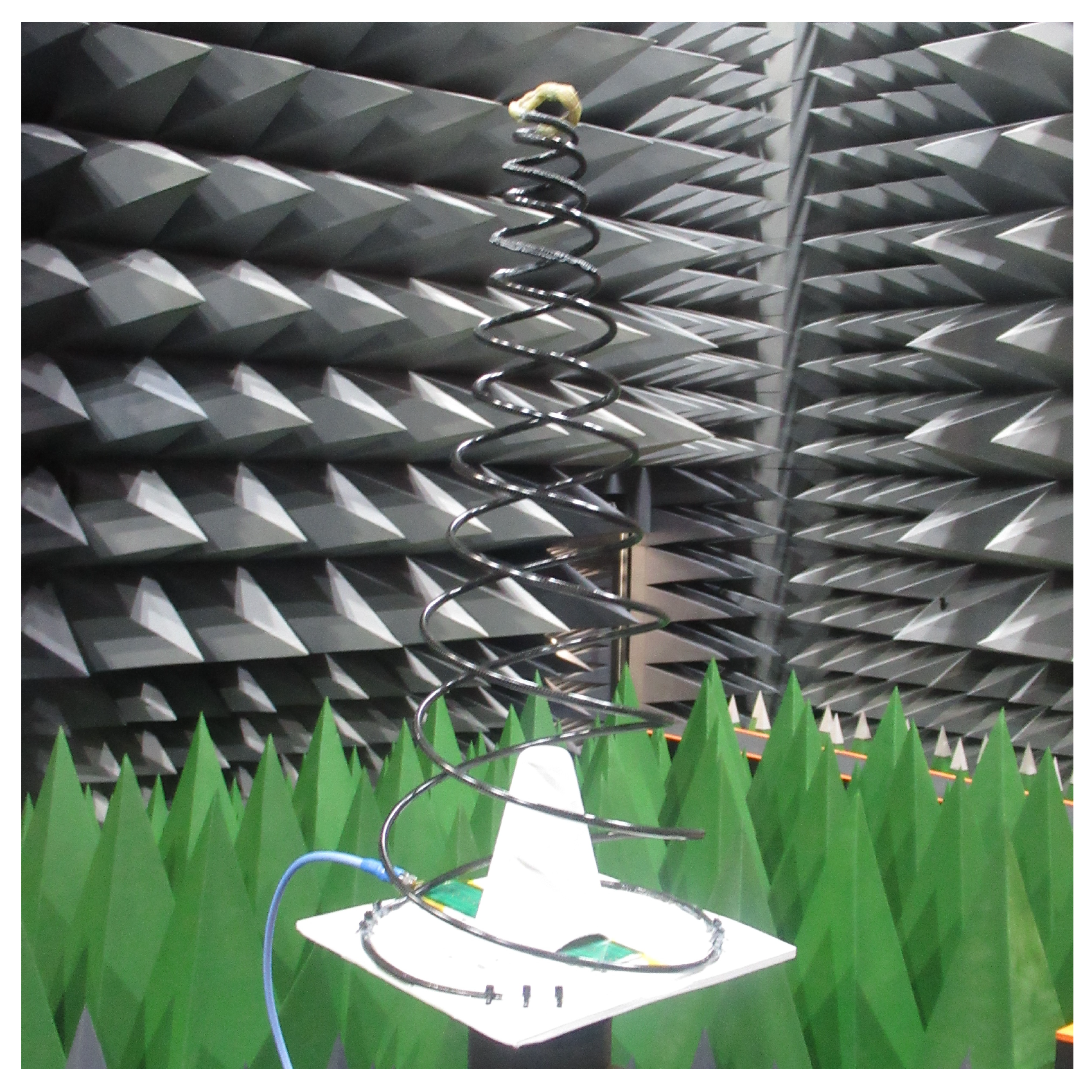
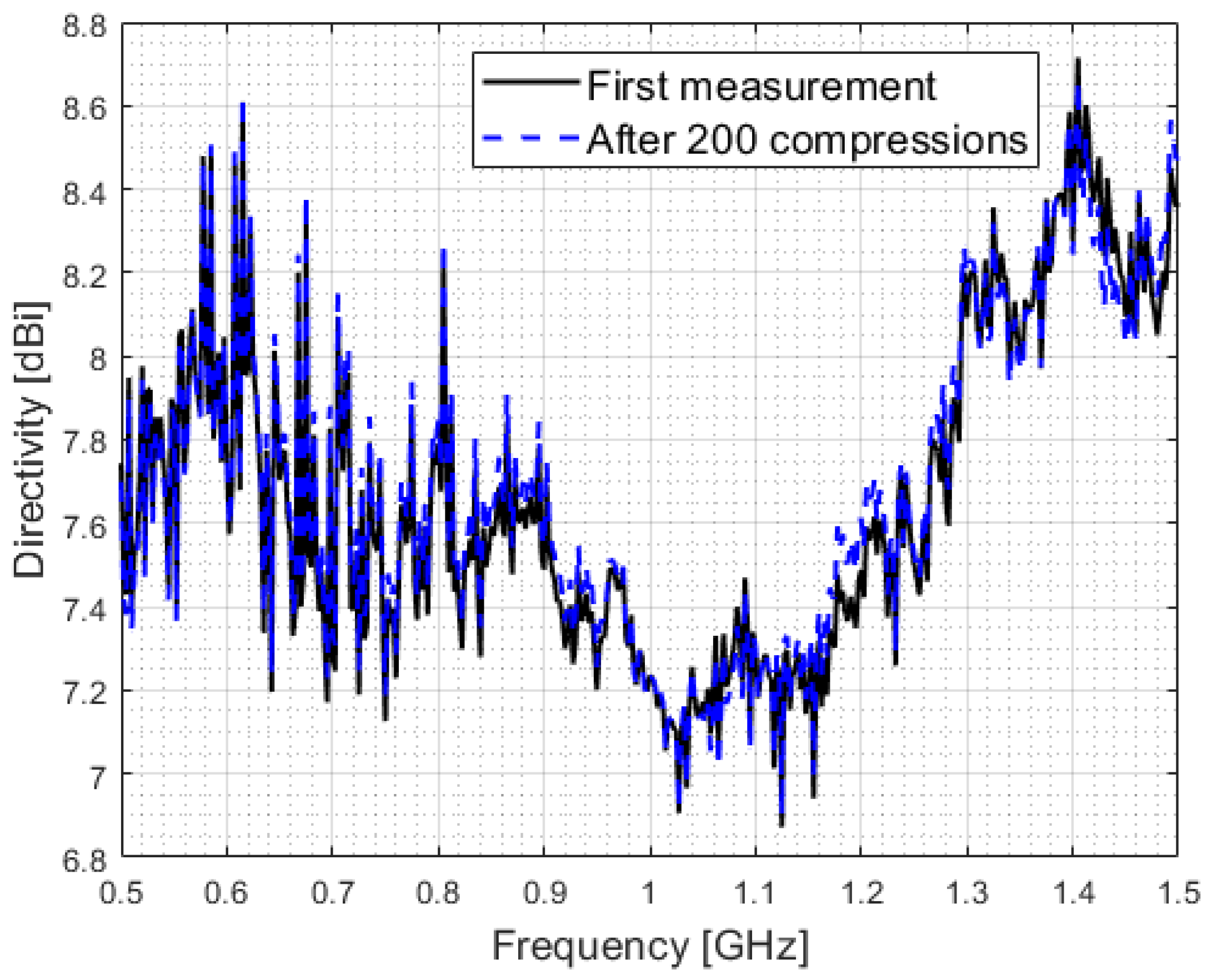

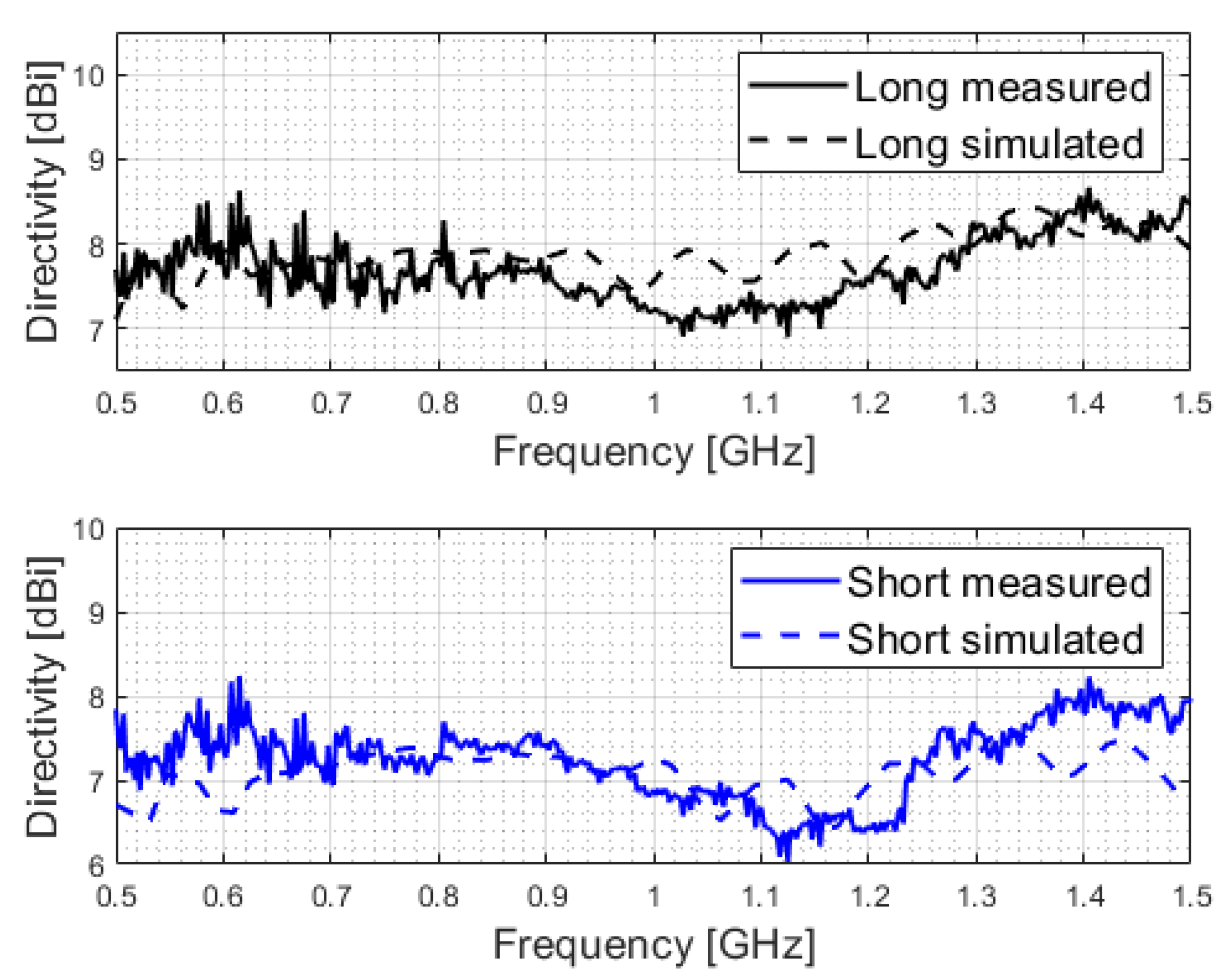

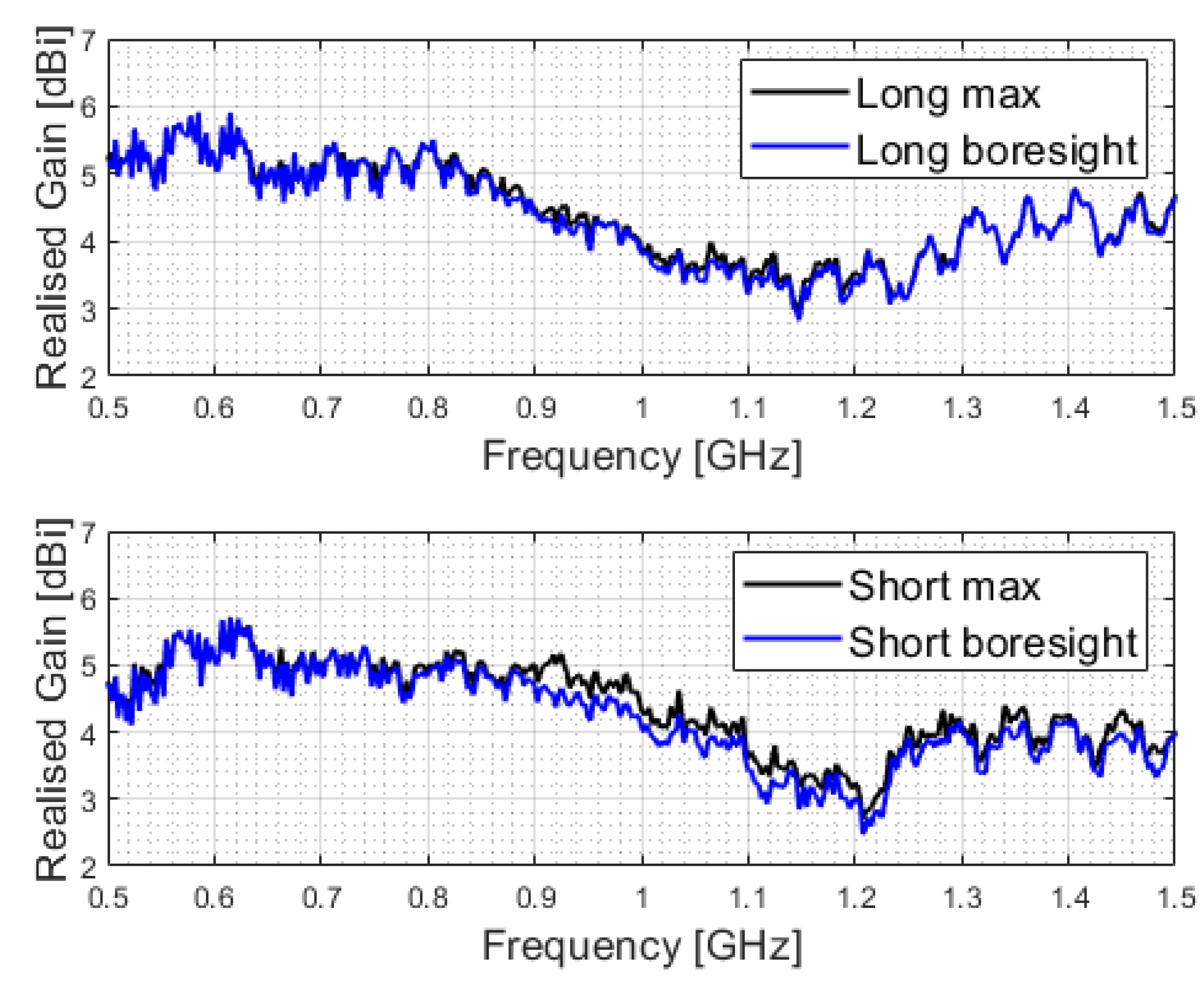


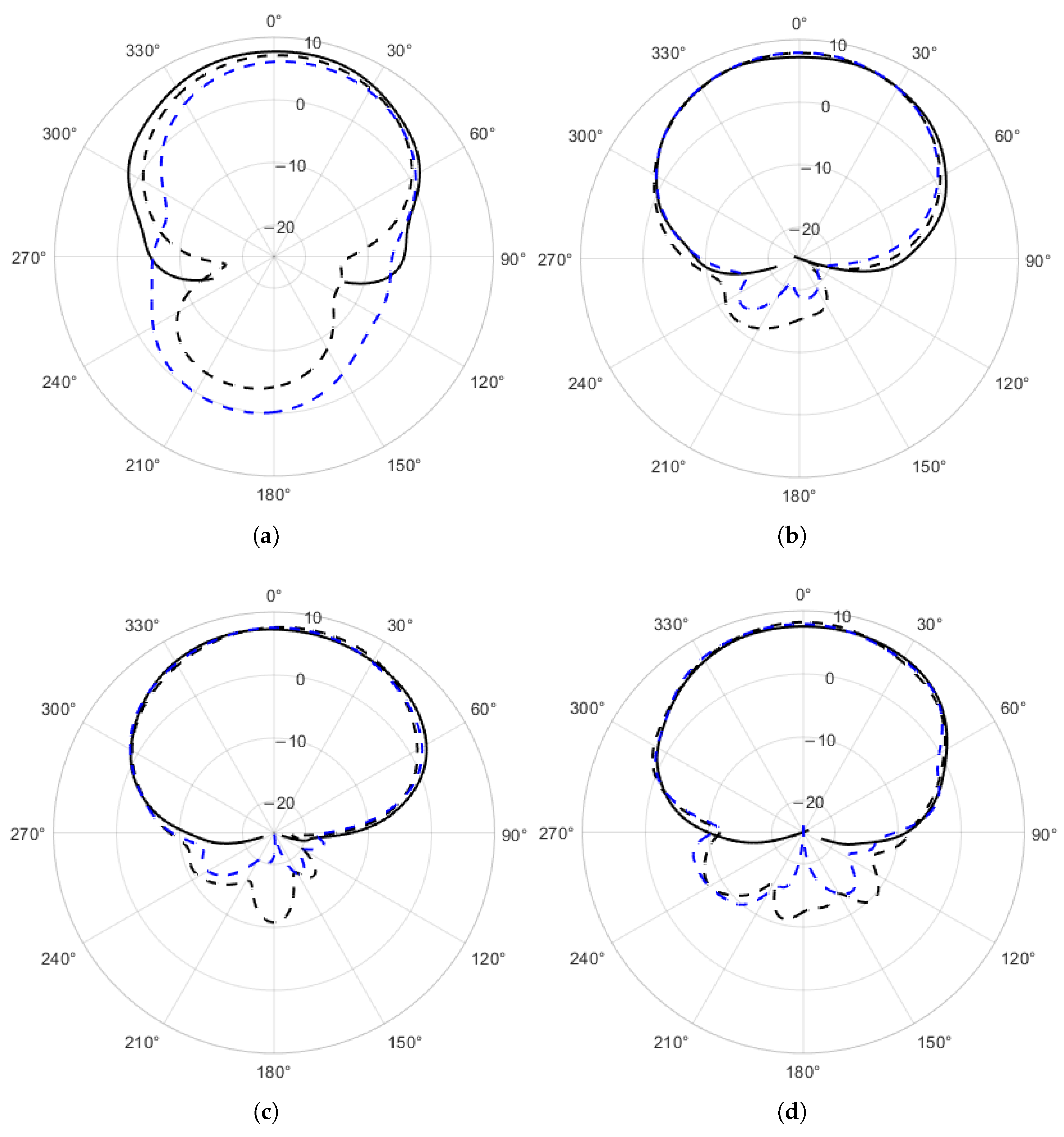
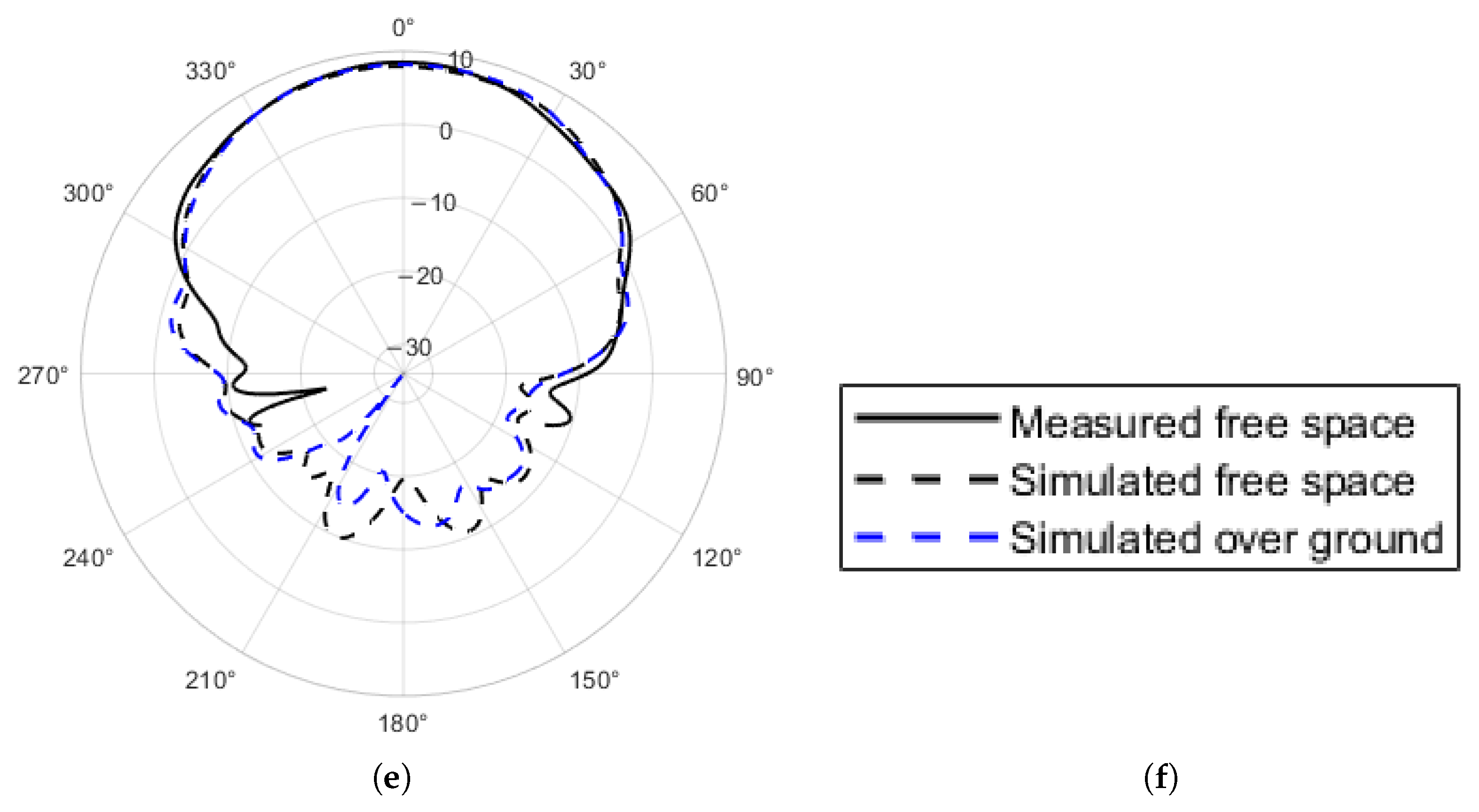
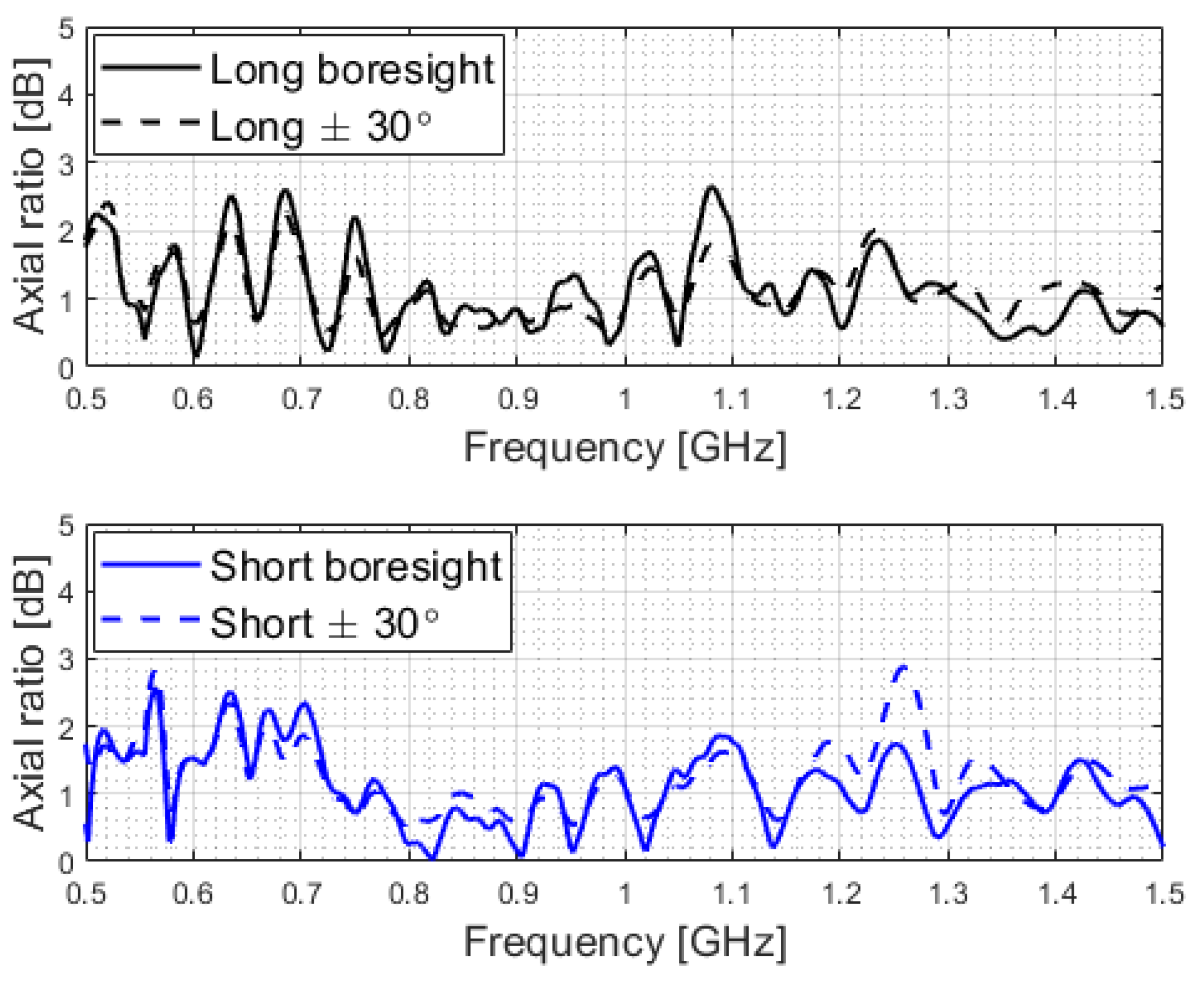
Disclaimer/Publisher’s Note: The statements, opinions and data contained in all publications are solely those of the individual author(s) and contributor(s) and not of MDPI and/or the editor(s). MDPI and/or the editor(s) disclaim responsibility for any injury to people or property resulting from any ideas, methods, instructions or products referred to in the content. |
© 2025 by the authors. Licensee MDPI, Basel, Switzerland. This article is an open access article distributed under the terms and conditions of the Creative Commons Attribution (CC BY) license (https://creativecommons.org/licenses/by/4.0/).
Share and Cite
Williams, L.R.; Hoel, K.V.; Bråten, L.E.; Romeijer, A.; Hjermann, N.; Sagsveen, B. A Deployable Conical Log Spiral Antenna for Small Spacecraft: Electronic Design and Test. Aerospace 2025, 12, 218. https://doi.org/10.3390/aerospace12030218
Williams LR, Hoel KV, Bråten LE, Romeijer A, Hjermann N, Sagsveen B. A Deployable Conical Log Spiral Antenna for Small Spacecraft: Electronic Design and Test. Aerospace. 2025; 12(3):218. https://doi.org/10.3390/aerospace12030218
Chicago/Turabian StyleWilliams, Lewis R., Karina Vieira Hoel, Lars Erling Bråten, Arthur Romeijer, Natanael Hjermann, and Bendik Sagsveen. 2025. "A Deployable Conical Log Spiral Antenna for Small Spacecraft: Electronic Design and Test" Aerospace 12, no. 3: 218. https://doi.org/10.3390/aerospace12030218
APA StyleWilliams, L. R., Hoel, K. V., Bråten, L. E., Romeijer, A., Hjermann, N., & Sagsveen, B. (2025). A Deployable Conical Log Spiral Antenna for Small Spacecraft: Electronic Design and Test. Aerospace, 12(3), 218. https://doi.org/10.3390/aerospace12030218





